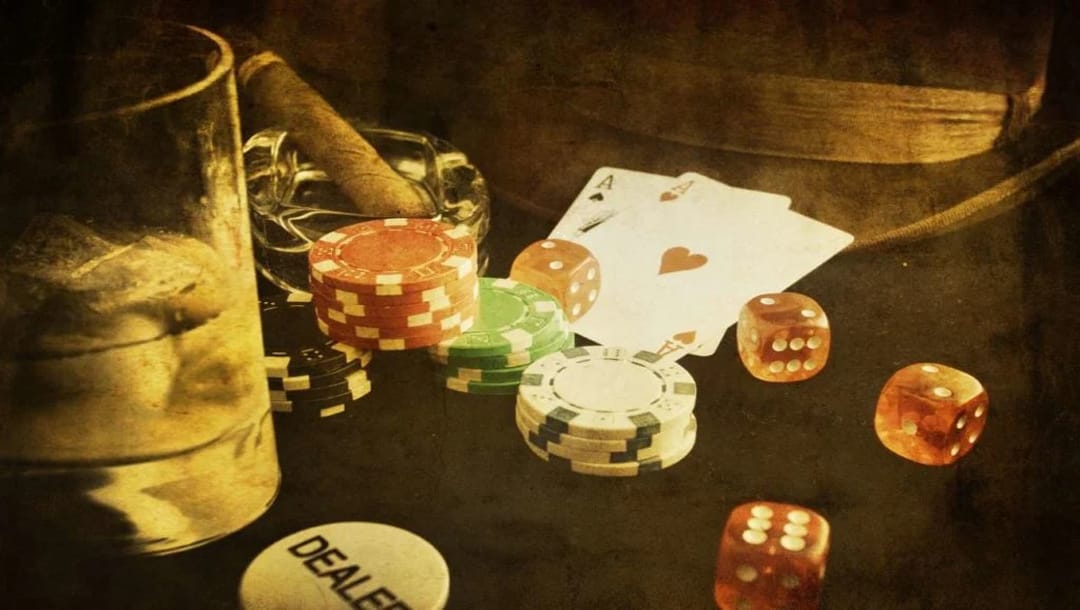Progress never stops and sometimes we forget just how far we’ve come until we look back. Sure, many will tell you not to revisit the past because we’re not heading that way. They’re right, but it’s important to take the time to remember how things were so that we can appreciate how far we’ve come. For gamblers, this is equally important, considering the incredible leaps forward the industry has taken over the decades. Let’s glance back at the history of gambling, gaze at the present and appreciate the progress.
Gambling in the USA
Like the then-and-now story of your favorite celebrity, casino history in America wasn’t always glitz and glamor. However, today, through tireless effort and tenacity, the rising star of gambling’s celebrity continues to shine, and it’s brighter than ever before.
It’s safe to say that gambling continues to shed its bad-boy image, winning the hearts of Americans far and wide through its ever-growing variety of casino games. From the classic offline casino to today’s fast-paced online casino games, casino history in America has blossomed.
Where it all began – The first casino
Low-hanging clouds of cigar smoke, seedy men and a low-lit room filled with whispers – this is often the image that the mind conjures up when we envision the history of gambling. It’s not particularly far off, but there’s more to the origin of casinos than that.
Ironically, the history of the casino industry in America dates back even further than the country itself, with some of the earliest records tracing it back to the late 1500s. At the time, the British held a more lenient and relaxed attitude towards gambling and it was not unheard of for the settlers to bet in local casinos or gambling houses. Lotteries, in particular, were used by British colonialists to raise money for the funding of government projects such as universities and schools.
The sweet wouldn’t be sweet without the bitter
In time, New Orleans and the Lower Mississippi Valley became the home of gambling and, to an extent, is the birthplace of casino history in America. The popularity of gambling only continued to grow in this region until finally, in the middle of the 19th century, contempt for gambling began to find its feet. Consequently, gambling activity migrated from the mainland to riverboats that floated along the Mississippi River as well as into territories in the West.
In the 1820s, these floating casinos attracted gamblers with an appetite for casino card games and boat race betting. Opportunists and professional casino card game cheaters followed in their wake. The long arm of the law wasn’t too far behind and with it came the firm grasp of consequences. In 1835, five gamblers paid the ultimate price for cheating and were hanged. The riverboat casino scene came to a close, signaled by the onset of the Civil War. Only more than a century later, in the 1990s, did it become legal again to indulge in gambling on riverboat casinos.
Going for gold
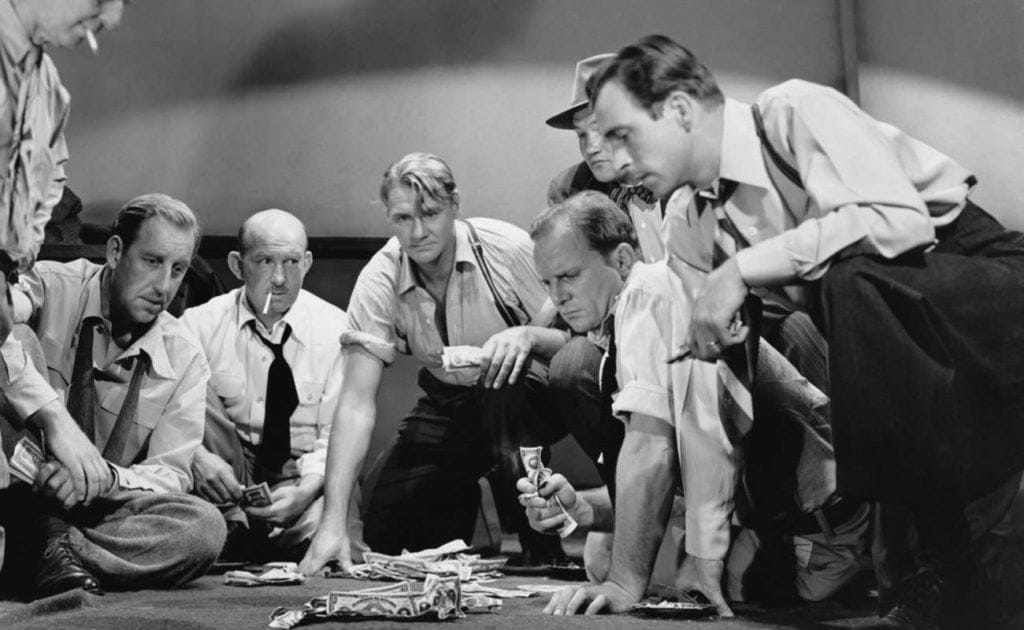
The territories of the West provided an environment that offered virtually limitless possibilities for casino-style gambling. In the wake of California’s Gold Rush, San Francisco dethroned New Orleans as the gambling center of the US and became the hub of land-based casinos in America. Marginally less popular centers of gambling sprang up in Miami, Galveston in Texas and Hot Springs in Arkansas. Towns of the Western Frontier, such as Denver and Kansas City, gained notoriety for their gambling houses. With widespread acceptance came the significant popularity of casinos. There, many gathered to enjoy conversation, casino card games, drinks and a variety of entertainment that included theater, dancing girls and piano music.
Gambling activity eventually waned in the early 20th century as lax attitudes made way for stricter views and more casino-averse legislation. At this juncture in casino history in America, casino games were outlawed across most of the nation. This all but plunged gambling into obscurity, rendering it an illegal activity only to be enjoyed under the cloak of darkness. The banning of gambling also brought about more organized crime.
Nevada and new beginnings
In 1929, the crash of the stock market and the start of the Great Depression saw the state look for alternate forms of revenue. Hence, in 1931, casino games were legalized in Nevada. It grew in leaps and bounds, surpassing San Francisco as the epicenter of gambling by the 1950s. In truth, even before the official legalization of gambling, early casino developers had already flocked to Nevada.
The Golden Gate Casino was founded long before legalized gambling
The Golden Gate Casino was established in Las Vegas in 1906, becoming the nation’s longest-running land-based casino and the first of its kind. Even today, the building still stands tall as the hallmark of casino history in America.
Cal Neva Casino steps up to the plate
Nevada wasn’t the only place making noteworthy milestones in the history of gambling in this period. A stone’s throw away, on the shores of Lake Tahoe, gambling history was being made. Cal Neva Casino was established in 1926 and success came quick and fast, attracting Frank Sinatra, Dean Martin, Sammy Davis Jr., the Kennedys, Joe DiMaggio and Peter Lawford. A mere week before her passing, Marilyn Monroe also stayed at the Cal Neva Casino.
What happened to the gangsters?

Remember the dimly lit rooms, low-hanging clouds of smoke and questionable characters? While they might not have been present at the origin of casinos, they were certainly a feature of gambling history. With legalization dragging its feet in the early 20th century, casinos dove underground into the open arms of the gangsters. Gambling in the shadows thrived and gangsters found a sanctuary in which to enjoy their casino card games and illegal bottles of booze. It was an era that gave birth to gangsters like Benjamin “Bugsy” Siegel, Lucky Luciano and Frank Costello. These fearsome gangsters actually played a pivotal part in the development of the Las Vegas Strip. Thankfully, very little seedy activity exists in Sin City today.
New Jersey follows Nevada
New Jersey followed Nevada in 1977, legalizing gambling in Atlantic City. This paved the way for the transformation of the Chalfonte-Haddon Hotel into the Resorts Casino Hotel. The city then witnessed exponential growth, becoming the leading choice for beach holidays and gambling, second only to Las Vegas.
The first tribal casino
With casinos slowly growing in popularity throughout the 20th century, it wasn’t until 1979 that the first Native American-owned casino opened. Based in Fort Lauderdale, Florida, the commercial casino was owned by the Seminole tribe. Since then, tribal casinos have become a significant source of income for a multitude of Indian reservations. In 2011, America boasted more than 460 tribal casinos that were run by 240 tribes, generating a total revenue of $27 billion.
Present day gambling in America
Legislation dictates that each state may regulate gambling activity that occurs within its borders. This means that some forms of gambling may be legal in some states while illegal in others. Whether it’s offline casino games or online casino games, this is also why it is incredibly important to be wary and mindful of whether the type of gambling you wish to engage in is legal. Legal forms of gambling in America include:
- Commercial casinos
- Bingo halls
- Tribal casinos
- Sports betting
- Race tracks
- Lotteries
Gross earnings
According to the Forbes article “US Gambling Revenue Hit Record $53 Billion In 2021,” casinos and mobile game apps across the US achieved a record high revenue of $53 billion, 21% higher than 2019. Sports betting also continues to grow in popularity, with an incredible $57.22 billion sports bets wagered in 2021. This increase is believed to mostly be due to the introduction of new sports betting markets in the US. iGaming contributed a total of $3.71 in revenue, a 139% improvement in revenue when compared to 2020. Native American-owned casinos were yet to release their stats at the time of Forbes publishing their article, but estimates indicate that an incredible $40 billion in revenue could be possible.
Cyberspace awaits
The continuous advancement of technology has also spearheaded the migration of casinos into the digital space, heralding the age of internet gambling. Virtually the full complement of offline casino games is available as online casino games, with new and even more exciting experiences being created too. What’s more, each of the classic casino games comes with a multitude of variations on online casinos. These online casinos give you the opportunity to either play for real money online or simply play free casino games for entertainment or practice. The benefits of playing online are well documented and include (but are not limited to):
- It’s safe and secure to play online
- Easy to access
- No need to spend time traveling to a land-based casino
- No need to dress up to enjoy casino-style gambling
- Free games are available
- Variety of game options to suit your preferences
- Bonuses and rewards are constantly available
While legal restrictions still apply and have been reinforced by the Unlawful Internet Gambling Enforcement Act of 2006, we live in a time where the sheer variety we have at our disposal is awe-inspiring – from slot games and online casino card games to casino apps and much more – we’re spoiled for choice.
BetMGM is a prime example of a casino that is both land-based and online, offering a variety of free casino games and casino games that allow you to win real money online.
The widespread uptake and popularity of internet gambling shows no signs of slowing down, with the industry being earmarked to be worth an estimated $66 billion by 2025, according to ResearchAndMarkets.
Sin City: Las Vegas’ gambling history in focus

It’s difficult not to think about Las Vegas and Nevada when talking about casino history in America. The association is virtually automatic as Las Vegas has attracted gamblers from around the world for decades. This is why failing to delve deeper into the history of Vegas would be a sin. Let’s shed some light on how today’s Sin City became the beacon of big-time betting, slots and casino card games.
The birth of Sin City
The Las Vegas story began being written over a century ago, back in 1905. Railroad workers used to spend their days laying the tracks that bridge the gap between Las Vegas and the Pacific coastline. And what did these workers get up to when they weren’t building these incredible railroads? If you guessed gambling, you’d be correct.
Today, we might search online for free casino games but back then, a game of cards was the go-to way to enjoy whatever hours you didn’t spend working. It was only a matter of time before other forms of debauchery crept onto the scene, including drinking and prostitution. In the interest of virtue, productivity and moderation, the government put in place restrictions and legislation to end the bad behavior – cue the 21-year ban of gambling.
Legal, legal at last: Gambling returns
The ban that ensued was no flash in the pan; it spanned more than two decades. Did Nevada go cold turkey during the 21 years of the ban? That was the expectation, but the history of gambling says otherwise. Lovers of gambling embodied the mantra “Where there’s a will, there’s a way.”
Gamblers wanted to play casino games and so they did. Casino games sprouted everywhere and anywhere, as long as there were four walls in which to hide away from prying eyes and get a well-deserved break from the stress of daily life.
Eventually, gambling didn’t have to live in the shadows, shrouded in darkness. But, like a teen hanging around with the wrong crowd, by the time it was legalized again, gambling had already picked up some bad habits and behavior. Crime was inextricably tied to the world of gambling and casino games. This was the risk of restriction and the price of prohibition. Still, the legitimizing of gambling paved the way for a better image, and gambling started to grow again.
The resort revolution
We already know that the first casino in Las Vegas was the Golden Gate. However, fast-forward a few years and the first resort that most closely resembles the resorts of today was established. In 1941, El Rancho Vegas revolutionized the concept of resorts and casinos by offering amenities like a swimming pool and horse-riding, alongside one roulette wheel, craps, two blackjack tables and roughly 70 one-armed bandits. This was the tinder that led to the explosive boom of Las Vegas.
The blossom and boom of Vegas
Las Vegas came into its own once World War II was over. Sadly, it wasn’t all sunshine, roses, and roulette; alongside the millions being made, won and spent in Sin City came the rise of the Mafia. Once free of mobsters, change came and not immediately for the better – the infamous Bugsy Siegel saw an opportunity in casino-style gambling and wanted in.
The American mafia’s first casino
Bugsy Siegel was hardly one to shy away from opportunity, so when the potential of casino-style gambling caught his eye, he grabbed hold of the opportunity firmly with both hands.
The first order of business was to create a resort that not only rivaled the extravagance and grandeur of El Rancho but completely eclipsed it. Some might say he succeeded. Drawing inspiration from Hollywood, he opened the Flamingo in 1946. Generous contributions from Meyer Lansky ensured that Bugsy had access to ample amounts of finance – such were the benefits of being backed by the drug money of a wealthy East Coast gangster.
Unfortunately, Siegel’s pipedream was short-lived. He crumbled under the pressure of mob bosses who wanted the Flamingo up and running sooner than later. In an effort to appease these mob bosses, shortcuts were taken, and worse, Siegel inadvertently bit the hand that fed him by stealing from the Mafia-controlled Union to make ends meet. Despite his best efforts, Bugsy failed to deliver and paid the ultimate price for his shortcomings.
The Bugsy Vegas legacy
In 1947, a year after Bugsy was assassinated, his legacy had clearly been etched into the annals of gambling history. The influx of mobster money created the casino games empire that is the Las Vegas we know, love and frequent today. The New Frontier, the Sahara, and the Sands were all built in the wake of the Bugsy saga. In addition, the popularity and sway of mobs brought many a star into the casinos of Sin City, including icons like Elvis Presley and Frank Sinatra.
All questionable things come to an end
Illegitimate gambling practice eventually found its way out of the history of gambling in America. In its stead came the rise of mega-casinos, driven by the insatiable investing appetite of business magnate Howard Hughes. Hughes spent within the region of $300m buying out the biggest names in Vegas. His investment breathed new life into each casino, and with each casino’s new lease on life, they attracted more gamblers and footfall.
The casinos of yesteryear: Then and now

The mega-resort casinos of the past that have stood the test of time, become modern-day masterpieces (including these 10 incredible, huge casinos) and inspire the imagination, have evolved with the times. Let’s take a look at the present and past casinos of gambling history to find out why so many gamblers the world over continue to flock to America to play casino games.
The Golden Nugget
The Golden Nugget originally opened under the name the Golden Nugget Saloon. It is widely attributed as paving the way for Sin City’s illustrious present. It is also regarded as the first casino that allowed gambling to flourish. People came from far and wide to try their hand at casino games. It was the escape or home away from home that allowed many workers to detach from the stresses of everyday life. Even in its infancy, the founder, Guy McAfee, made sure that the Golden Nugget stood out from the norm by installing air-conditioning in the 1940s. Today, the Golden Nugget holds the enviable title of being the “most luxurious resort in the Fremont Street Experience.”
The Flamingo Hotel
The Flamingo Hotel was established in 1930 in Las Vegas, also opening its doors to the public in 1946. It featured a design that rebelled against the stereotypical Old West themes, which were a dime a dozen in the history of the casino industry. However, just after a mere two weeks after opening and after a loss of $300,000, the resort closed.
The Flamingo re-opened in 1947 and later attracted the upper brass of entertainment, such as Louis Armstrong and the Three Stooges, as well as Dean Martin. Still standing today, the Flamingo offers onlookers and avid gamblers who visit memories reminiscent of retro Vegas. Today, it occupies 15,000-square-feet of real estate and continues to maintain its popularity among gamblers and vacation-goers who frequent the Las Vegas strip.
The Tropicana
The Tropicana hotel and casino re-opened in 1957. It was worth an unprecedented $15 million, which also made it the most expensive hotel and casino resort in the city at the time. The impressive valuation was tangible and plain to see, with lush green lawns, an awe-inspiring stained glass ceiling and hotel rooms with balcony views. The ceiling, which includes more than 4,000 square feet of leaded glass, is still a prominent feature of the extravagant example of architecture and interior design. It was easily one of the most sought-after luxury destinations in Sin City. A testament to this was its nickname, “the Tiffany of the Strip.”
Stardust Hotel and Casino
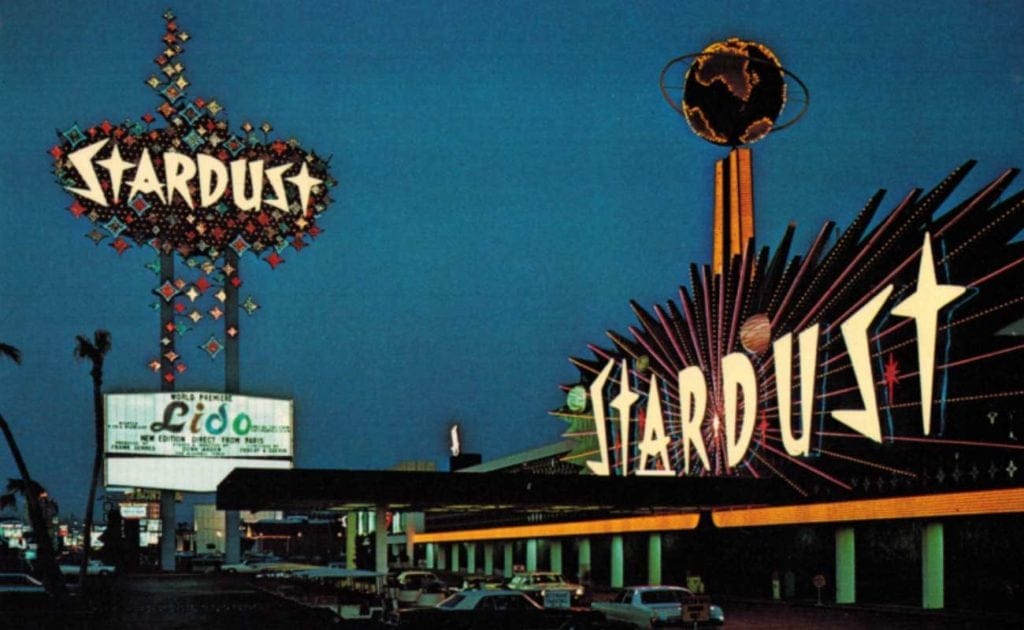
Most recognized for its trademark neon sign, the Stardust Hotel and Casino opened in 1958 in Las Vegas. There are many who regard the Stardust to be the grandest of all the casinos and hotels built on the Vegas Strip during the 50s. These lofty perceptions were fuelled by 16,000-square-feet of casino, as well as 1,000 hotel rooms.
According to the National Museum of Organized Crime and Law Enforcement, aside from its instantly recognizable neon sign, the Stardust was also known for its ties to the mob. Unfortunately, the Stardust closed its doors in 2006, much to the dismay of gamblers who frequented the casino and hotel to play casino games.
Caesars Palace
Inspired by Ancient Rome, it’s hard to imagine the Las Vegas strip without the iconic Caesars Palace. Caesars Palace hotel and casino opened in 1966, setting the tone and standard for how future land-based casinos were built in America. According to the History Channel, it was the first Las Vegas casino and hotel to market a clear and consistent theme across its communications. The sheer pedigree of the hotel and casino also attracted some of the most revered entertainers and celebrities of the time, from Diana Ross to Muhammad Ali. The success enjoyed by Caesars Palace was so significant that it influenced the design, architecture, and marketing of casinos and resorts that followed.
Resorts Casino Hotel

In 1978, the East Coast welcomed its first casino – Resorts Casino Hotel.
Its establishment followed the legalization of gambling the year before in New Jersey in Atlantic City. The legalization of gambling in New Jersey was also very much in response to the well-known success being enjoyed in Nevada. Resorts Casino Hotel became the go-to choice for tourists who ventured to the East Coast with an appetite for gambling. Slot games were a favorite and that’s still very much the case with the Resorts Hotel Casino featuring more than 800 slot machines on the casino floor.
Paris Las Vegas
Paris Las Vegas was built in 1999. The Nevada-based hotel and casino features a five-story replica of the Eiffel Tower. The casino occupies 85,000 square feet and houses over 1,700 slot games. Today, the casino still maintains its European-like aesthetics, allowing guests and gamblers to walk along cobbled pathways as they take in the “Parisian” sky.
Origin of casino games
By now, we’ve gotten to pretty good grips with the history of actual casinos in America, but what about the card and casino table games that have drawn crowds, time and time again over the years? There are a number of classic casino games that people have loved over the years and continue to love today. Let’s take a look at these classic gambling experiences and their history.
The history of blackjack
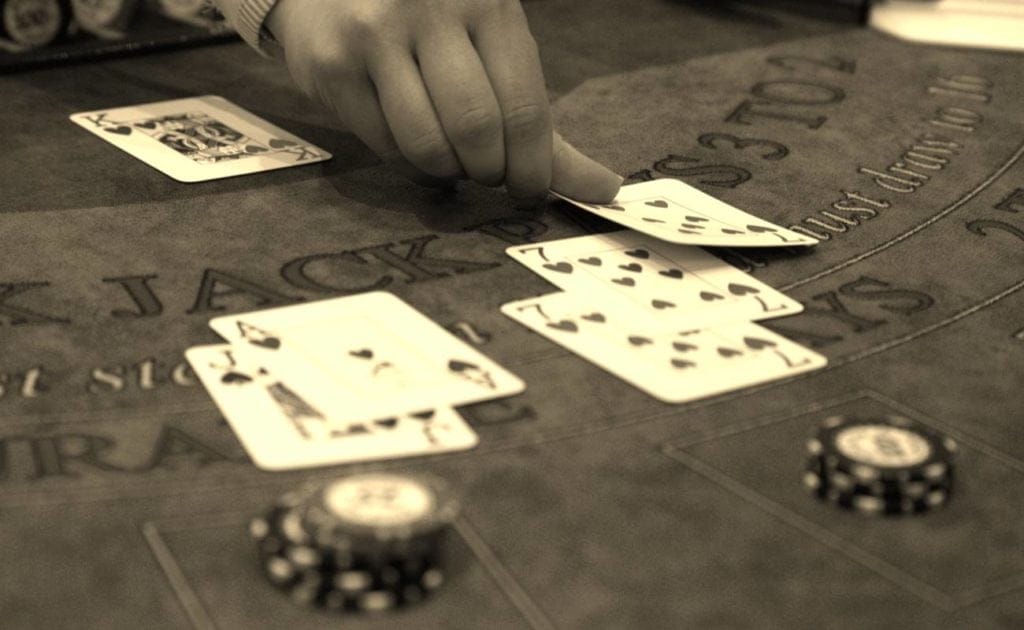
The true origin of blackjack is shrouded in mystery, with a host of different theories and thoughts on the matter going around for many decades. For example, there are many who believe the casino card game originated in France during the 1700s. At the time, there was a game called Vingt-et-Un (French for 21) being played. It seems logical to assume that blackjack’s roots could be traced back to the beginnings of this game.
On the other hand, there are many who suggest that the casino origins of blackjack can firmly be linked to a Spanish game. Gamblers in Spain played a game called One and Thirty – essentially a three-card version of blackjack. In other words, to win, a gambler or player needs to get as close to 31 as possible. The theory is that One and Thirty was the inspiration behind the French game Vingt-et-Un and so should be regarded as the casino origin of blackjack.
Ideally, we would prefer opinion to be polarized by just these two sides of the story, but life is rarely as simple as that, which is why there’s a third theory. This theory traces the history of blackjack to the Romans. It seems logical enough, especially when you take into account just how much the Romans enjoyed and had an affinity for numbers as well as betting on the odds – just take a look at the history of gladiator battle appreciation for details. The Romans had their own version of blackjack in which gamblers were given wooden blocks with numbers on and then proceeded to bet on whether their combination would hold the highest value.
Whether it was the Spanish, the French or the Romans, we’ll never know, but what we do know is that there are few games that can compare to the fast-paced suspense of blackjack. Even if the history of blackjack is somewhat unclear, the least we could do is enjoy the fact that the game exists at all.
History of roulette
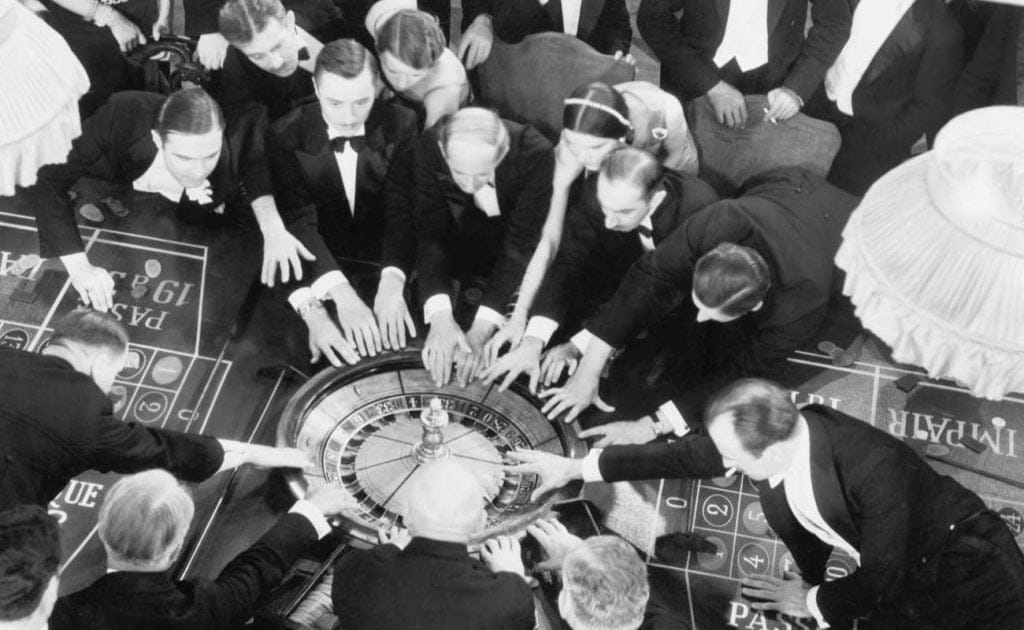
The thing about history is that it’s seldom what we expect it to be. The history of roulette as a casino game is no different. When it was first created, the intended use of the roulette wheel was for anything but entertainment. In fact, it was a bit of an accidental discovery with the intended purpose being a perpetual motion machine. Like a sunny-side-up egg that becomes scrambled eggs, the outcome was not according to plan, but the outcome was still incredibly useful.
In 1655, French mathematician and physicist Blaise Pascal had set out to create a machine that could continuously spin without the need for the application of energy. It was a novel idea but also impossible as it defied the laws of physics. We imagine that this realization left Pascal disappointed, but his failure soon led to the invention of this casino game favorite. We hope he took some solace in that.
The introduction of the zero to the wheel
While we might know and be accustomed to seeing the zero on the wheel, if we study the history of gambling, we’ll soon realize that it wasn’t always there. A design attributed to Francois and Lois Blanc, the addition of the number was ordered by King Charles III of Monaco. It wasn’t a cosmetic addition; it was designed to help increase the chances of the house winning, rather than parting ways with money paid out to players. As fate would have it, by the time wheels with the zero added arrived, France had prohibited gambling.
History of poker
Poker. It’s a game we all know and love but probably have very little idea of where it came from. This seems to be a common theme that revolves around all the casino games that have risen to almost universal popularity.
What we do know is that the history of poker is an ancient one that dates back almost a millennium ago, colored by different cultures that have lived on different continents. Numerous historians would like to claim that the origins of poker can be found in a domino game that was played by a 10th-century Chinese emperor. However, many others advocate for the history of poker coming from the Persian card game As Nas, which dates back to the 16th century.
The card game As Nas only has 20 cards in a deck. Within this deck, there are five ranks; listed from highest to lowest, as follows:
- As (ace)
- Shah (king)
- Bibi (queen)
- Serbaz (soldier)
- Couli (dancer)
When playing As Nas, the whole deck would be dealt, as each player received five cards. The high hands were identical to the ones we are accustomed to today, with the exception of straights and flushes. Also, just as today, the best hand won.
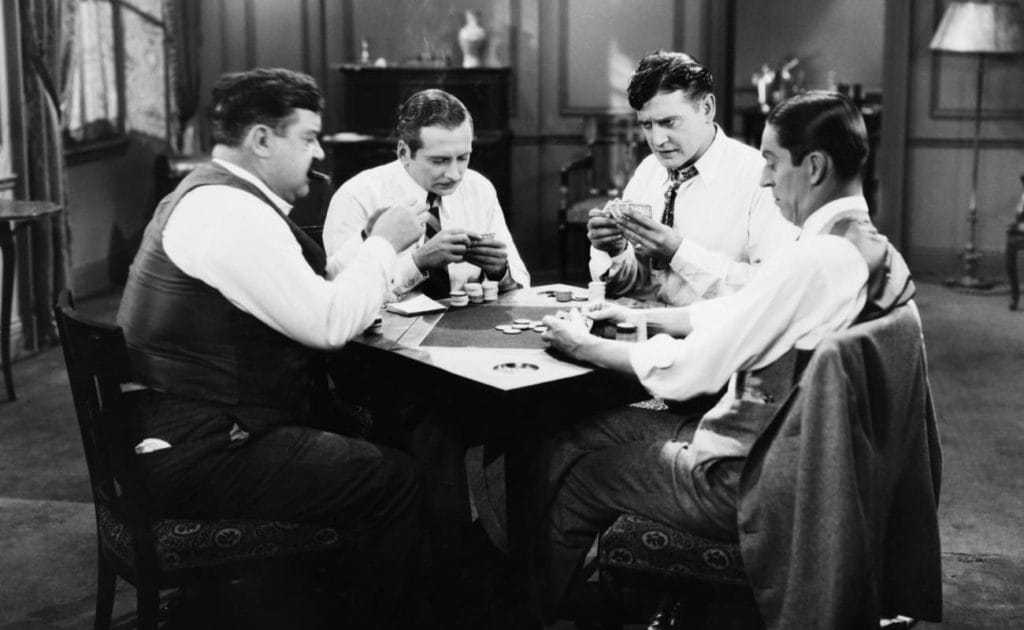
In addition, As Nas involved betting. The difference was that in As Nas, there were no draws or remaining cards to be dealt, so as a player, you had to decide whether to bet or bluff. As Nas also had a form of straddling that allowed players to bet before looking at their cards. They would bet before seeing their cards by claiming, “Not seeing, I have seen.”
Where Europe is concerned, poker’s most probable prototype is Poque, which originated in France. Poque has a German equivalent called Pochen. Both games are believed to have come from the Spanish game Primero. In Primero, each player was dealt three cards, and bluffing was an integral part of the game.
So how did poker find its way to the US? It’s believed that French colonists brought Poque along with them when they settled in North America. This includes New Orleans and nearby areas, which eventually became part of the US due to the Louisiana Purchase in 1803. English-speaking settlers in the area evolved Poque into poker, adding aspects of the modern game, such as dealing five cards to each player and the use of a 52-card deck.
The next chapter in the history of poker occurred when it spread up the Mississippi River and across the country. This was made possible by poker’s growing popularity among riverboat crews.
While there have been numerous variations of poker that appeared over the years, the core focus of the game and the way it was played remained fairly unchanged for decades. However, the development of the internet would change the history of poker forever, with the first online poker games for real money appearing at Planet Poker in 1999. This helped poker explode into the mainstream consciousness, particularly after Chris Moneymaker made it to the World Series of Poker thanks to playing and qualifying through an online poker site.
History of slots games
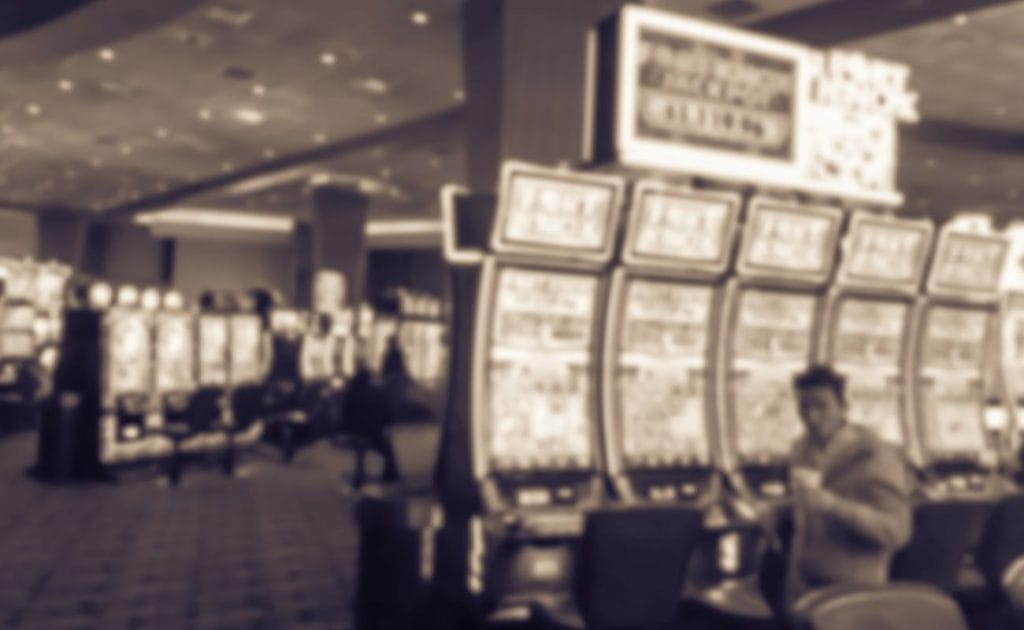
The slot machine was the brainchild of a man named Charles Fey. He invented the slot machine in 1895. He dubbed his first slot machine the “Liberty Bell.” The first Liberty Bell slot machine had three spinning reels that showcased pictures of cards. In order to play the earliest form of slot games, you had to pull the lever on the side of the machine. The player would then watch intently as the reel came to a halt revealing whether they had won or lost. If the reels came to a halt with three Liberty Bells, the player would win the grand jackpot of 50 cents. It was simple, fun, promised suspense and occasionally a large payoff too. Suffice to say, Charles Fey’s invention soared in popularity overnight and so did the history of slots games.
Excluding the invention of the Liberty Bell, the greatest advancement in the history of slot games is surely the online casino. Online casinos allow players far and wide to play online slots. The difference is the nearly endless variety of themes, bonuses, and winnings up for grabs. All this is available from the comfort of home or while you’re on the go too. This leap to the digital world completely revolutionized the way people played online casino slots, especially after the invention of the smartphone, which allowed people to enjoy these games from any location with a good internet connection.
Become a part of history today
The history of gambling has come a long way over the years and with each day, a new chapter is being written as technology continues to evolve. BetMGM is an online casino that you can enjoy through a web browser as well as a casino games app that you can download onto your smartphone.
You can follow BetMGM’s hassle-free registration process and get access to hundreds of different online casino games, including slots, virtual sports, table and live dealer casino games.
Your BetMGM account also gives you access to the world of sports betting and lets you manage your bets and update your personal details effortlessly. Simply deposit funds into your account and you will be able to place bets with real money, sending you well on your way to winning big and enjoying endless entertainment.




